
If you're in the business of dealing with pipes, drains, or any form of underground utilities, you know the importance of accurate diagnostics. Pipe inspection cameras are the unsung heroes in this scenario. This guide aims to be your comprehensive resource for understanding and utilising these essential tools.
Introduction to Pipe Inspection Cameras
When it comes to inspecting pipelines, gone are the days of guesswork and invasive digging. Pipe inspection cameras have revolutionised the way we understand and solve issues related to plumbing and underground utilities. This section will explore what these cameras are and why they are indispensable in today's world.
What is a Pipe Inspection Camera?
A pipe inspection camera is essentially a high-resolution camera mounted on a flexible rod. This setup allows the camera to navigate through complex pipe structures, providing real-time video feedback. Whether you're dealing with blockages, leaks, or maintenance checks, these cameras are your eyes where you can't reach.
The Importance of Pipe Inspection Cameras in Various Industries
From plumbing and construction to municipal work and even oil and gas industries, pipe inspection cameras have a wide range of applications. Their ability to provide a detailed view of inaccessible areas makes them invaluable for diagnosing and solving issues efficiently.
Essential Components of a Pipe Inspection Camera System
Understanding the anatomy of a pipe inspection camera can help you make an informed decision when purchasing or renting one. Let's break down the key components.
The Camera Head: The Eye of the System
The camera head is the business end of the system. It captures high-resolution video footage as it navigates through the pipeline. Look for models that offer features like LED lighting and self-leveling capabilities for the best results. For those interested in high-quality drain camera systems, then consider our VCam-6 D34 Standard Pushrod and VCam-6 D46 Standard Pushrod.
Flexible Rods and Reels: The Navigational Backbone
The flexible rod to which the camera is attached plays a crucial role in maneuvering through the pipeline. Depending on your needs, you may opt for a standard or heavy-duty pushrod. Check out our heavy duty drain camera systems, VCam-6 D34 Heavy Duty Pushrod and VCam-6 D46 Heavy-Duty Pushrod for reliable options.
Monitors: The User Interface
The monitor displays the live video feed from the camera, providing you with real-time visuals of the pipe's interior. Most modern systems come with high-definition monitors that offer features like video recording and snapshot capabilities such as the vCam-6 High Definition Control Module.
Control Units: The Operational Hub
This is where all the controls are housed. From steering the camera to adjusting the lighting and recording the video, the control unit is your command center.
Power Sources: Energizing the System
Most pipe inspection cameras are either battery-operated or require a direct power connection. Your choice will depend on the nature and duration of your inspection tasks.
How to Use a Pipe Inspection Camera: A Step-by-Step Guide
Using a pipe inspection camera may seem straightforward, but there are best practices to ensure you get the most accurate and helpful results.
Pre-Inspection Preparations
Before you begin the inspection, make sure the pipeline is free of any obstructions that could damage the camera. This might involve a preliminary cleaning or flushing of the pipe.
Inserting the Camera: Best Practices
Insert the camera head into the pipeline carefully. Use the flexible rod to guide the camera into the pipe. Make sure to do this gently to avoid any damage to the camera.
Navigating the Pipeline: Tips and Techniques
Once the camera is inserted, use the control unit to navigate through the pipeline. Advanced models come with features like pan-tilt functionality, allowing for a more comprehensive inspection. For a visual guide on how to effectively navigate a pipeline, check out this YouTube video:
Monitoring and Analysis: What to Look For
As you navigate the camera, keep an eye on the monitor. Look for signs of cracks, leaks, blockages, or corrosion. The real-time video feed allows you to make instant assessments.
Documentation: Recording and Storing Data
Most modern pipe inspection cameras come with recording features. This allows you to document the inspection for future reference or for sharing with other stakeholders.
Types of Pipe Inspection Cameras: A Comprehensive Overview
Pipe inspection cameras come in various shapes and sizes, each designed to meet specific needs. In this section, we'll look at the different types available in the market.
Mini Camera Systems: Compact and Efficient
Mini camera systems are designed for smaller pipelines and are ideal for residential use. They are lightweight, easy to maneuver, and generally more affordable. For those who are interested, we offer the Vivax vCamMX-2 Mini Drain Inspection System with an 18mm Camera and a 26mm Camera.
High-Resolution Cameras: For Detailed Inspections
These are the heavy hitters, often used in industrial settings. High-resolution drainage cameras provide superior video quality, making them ideal for detailed inspections.
Long-Range Reel Cameras: For Extensive Pipelines
Designed for long-range inspections, these cameras come with extended reels that can cover significant distances. They are most commonly used in municipal and industrial settings.
Specialized Drain Inspection Cameras: For Specific Needs
These cameras are engineered for specialized tasks like inspecting drains and sewer lines. They come with features like waterproofing and the ability to navigate through dirty or wet environments.
Advanced Features and Tools to Consider
When investing in a pipe inspection camera, there are additional features that can make your job easier and more efficient.
Pan-Tilt Functionality: A 360-Degree View
Some advanced models come with pan-tilt functionality, allowing the camera to rotate and provide a 360-degree view. This is particularly useful for thorough inspections.
Durability and Resilience: What to Look For
Durability is a key factor to consider. Look for cameras that are waterproof and resistant to various chemicals to ensure they last longer.
Image Clarity: Understanding Resolution and Quality
The clearer the image, the easier it is to identify issues. Opt for cameras that offer high-resolution images for the best results.

Where to Buy Your Next Pipe Inspection Camera
If you're looking to invest in a reliable pipe inspection camera, look no further. We offer a range of high-quality options tailored to meet your specific needs.
Why Choose Us for Your Pipe Inspection Camera Needs
We understand the intricacies involved in pipe inspections, and that's why we offer only the best products that are up to the task. From mini camera systems to high-resolution and long-range reel cameras, we have it all.
Featured Products for Consideration
We feature a range of products that are designed to meet various inspection needs. Whether you're dealing with small residential pipes or large industrial pipelines, we have a camera system that's right for you.
Making an Informed Purchase: Tips and Guidelines
Before making a purchase, consider the nature of your inspection tasks, the features you require, and your budget. Our experts are always available to guide you through the selection process on +44 (0) 1757 630469
Video Demonstrations and Tutorials
If you're a visual learner, we've got you covered. Our video demonstrations provide practical insights into using pipe inspection cameras effectively.
Learning from Video Demonstrations
We offer video tutorials that cover everything from setting up the camera to navigating complex pipelines. These videos are designed to make your inspection tasks easier and more efficient. For a hands-on demonstration, check out this vCamMX-2 tutorial.
Maintenance and Troubleshooting
A well-maintained camera system will serve you for years. In this section, we'll cover the basics of maintenance and troubleshooting.
Keeping Your Pipe Inspection Camera in Top Shape
Regular maintenance is key to ensuring the longevity of your camera system. This includes cleaning the lens, checking the rod for any wear and tear, and ensuring all connections are secure.
Troubleshooting Common Issues
If you encounter issues like a blurry image or difficulty in maneuvering the camera, this section will provide you with quick fixes and solutions.
Conclusion: Making an Informed Decision on Pipe Inspection Cameras
In conclusion, a pipe inspection camera is an invaluable tool for anyone involved in the maintenance or inspection of pipelines. With various types and features to choose from, making an informed decision is crucial for effective and efficient inspections.
Frequently Asked Questions
We understand you may have additional questions, and this section aims to provide quick answers to some common queries.
- How Do I Maintain My Pipe Inspection Camera?
Regular cleaning and occasional servicing are key to maintaining your camera system. Always refer to the manufacturer's guidelines for specific maintenance tips.
- What Are the Limitations of Pipe Inspection Cameras?
While these cameras are incredibly versatile, they do have limitations such as the inability to navigate extremely tight bends or provide a view of areas beyond their lighting capacity
- Can I Rent a Pipe Inspection Camera?
Yes, renting is an option if you need a camera for a short-term project. However, for long-term needs, investing in a quality system is more cost-effective.

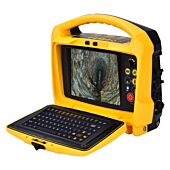

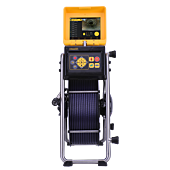

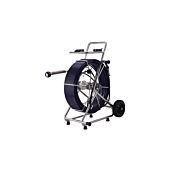
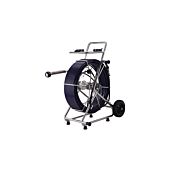


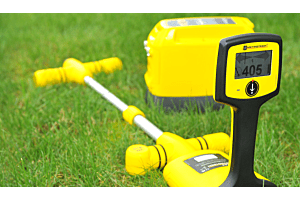
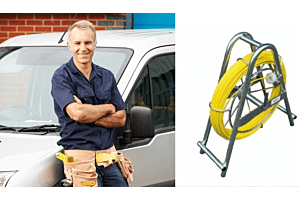
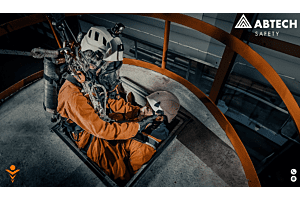
Login and Registration Form